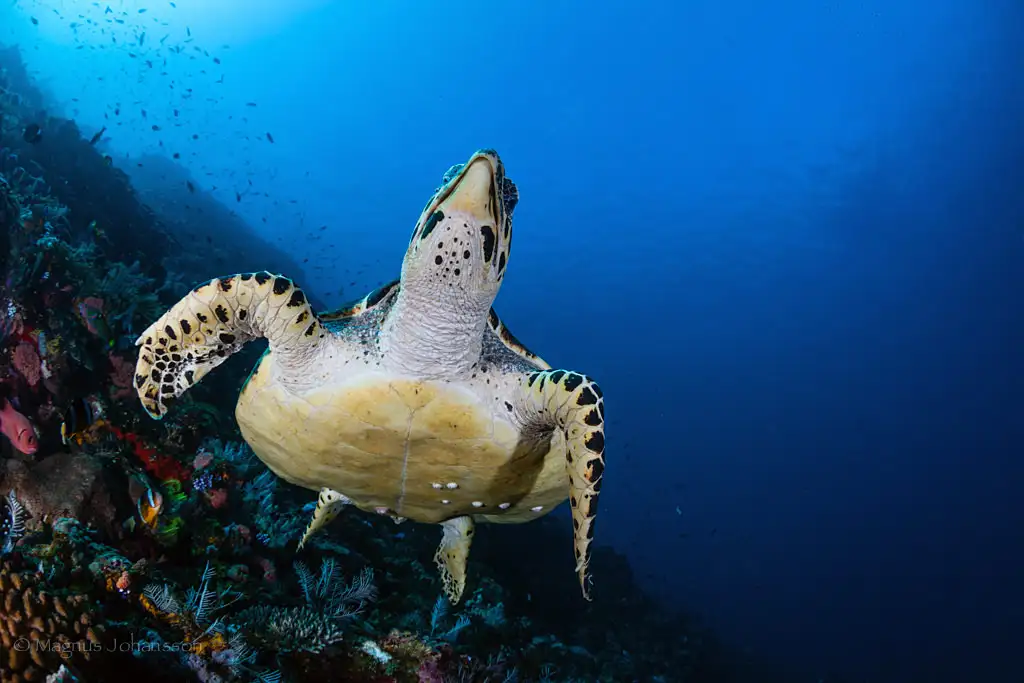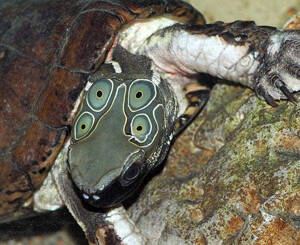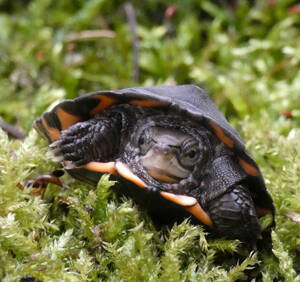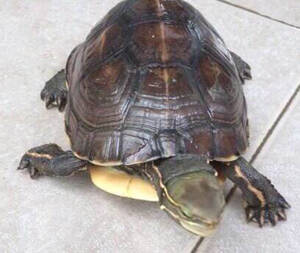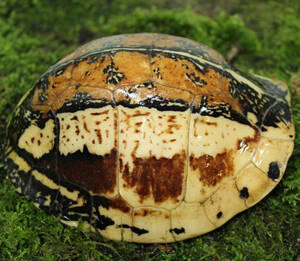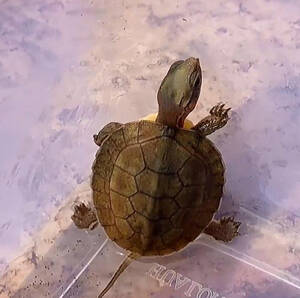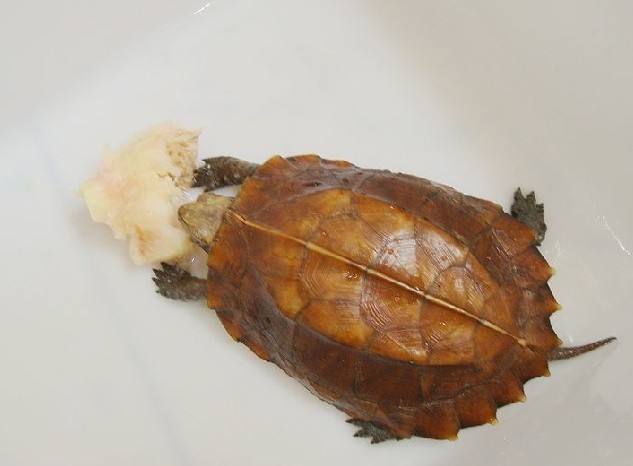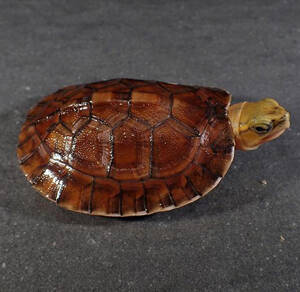Mauremys nigricans
IUCN
LCBasic Information
Scientific classification
- name:Mauremys nigricans
- Scientific Name:Mauremys nigricans,Red-necked pond turtle,Painted turtle, black-necked painted turtle, three-lined turtle, Guangdong grass turtle, black-necked terrapin
- Outline:Testudines
- Family:Testudinata Testudinidae genus
Vital signs
- length:12-25cm
- Weight:
- lifetime:Around 1980
Feature
They like warmth and are afraid of cold. They have a gentle temperament and will not hurt others on their own initiative.
Distribution and Habitat
Distributed in Guangdong, Guangxi, and Hainan in China. Distributed abroad in Vietnam.
Inhabits streams and ponds in mountainous and hilly areas. Omnivorous, preferring animal food such as fish, shrimp, and snails, but also eating plant fruits and vegetables.
Appearance
The head is wide, the carapace is oval, with a central ridge, no side ridges, and the front and rear edges are not serrated. The front edge of the plastron is straight, the rear edge is deeply notched, the limbs are flat, and the tail is thin and short. The top of the head is black, with yellow-green worm-like patterns and vertical stripes on the sides of the head, and the vertical stripes extend to the neck. The pharynx is light yellow with gray-black spots. The carapace is black, tending to brown-black or dark brown. The plastron is yellow, tending to brown-yellow, with black spots. The area of the black spots increases in older individuals.
Details
The black-necked turtle is large in size and lives in streams in subtropical hilly and mountainous forests. The black-necked turtle moves clumsily, crawls slowly, has a gentle temperament, and does not actively hurt people. The black-necked turtle likes warmth and is afraid of cold. It cannot live in a low temperature (temperature below 15℃) environment for a long time (more than 3 months). The suitable temperature is 25℃, and it hibernates when the ambient temperature is around 18℃. It is omnivorous and feeds on fish, shrimp, worms, and also grains. In artificial breeding, it eats lean pork, shrimp, poultry offal and a small amount of vegetable leaves.
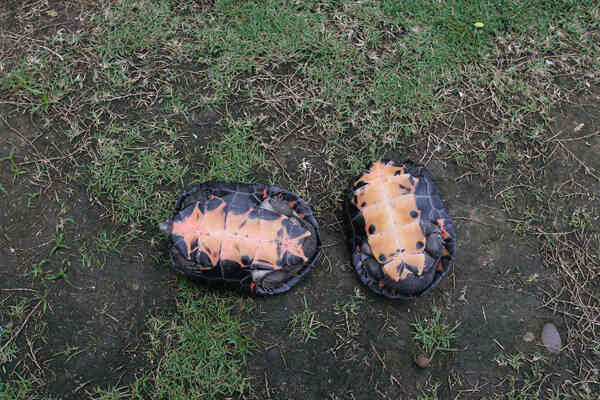
The breeding season is from May to September each year. The eggs are oviparous, with only two eggs laid each time. The shell is hard, white, and oblong. The egg diameter is 51 mm × 27 mm. The average long diameter is 46 mm, the average short diameter is 24 mm, and the average egg weight is 8-9 grams. At a temperature of 30°C, the incubation period is 60-65 days.
The natural population of black-necked turtles is extremely small. According to the World Conservation Union (IUCN) in 2000, due to its narrow distribution area and large-scale hunting by humans, the estimated number of wild natural turtles is about 1,000, and the number of adults will continue to decrease by at least 20%. The small number of turtles, coupled with repeated hunting for food, has led to the end of their existence.
Due to the narrow distribution area, the destruction and reduction of the habitat and breeding environment, and the difficulty of natural proliferation. Due to its high economic value, it has been repeatedly captured, and the wild resources have been severely damaged and are in an endangered state.
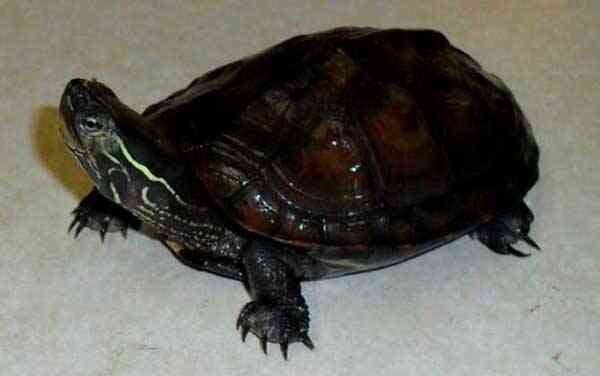
Protection suggestions
- The black-necked turtle is a rare species unique to China. We should make full use of the power of media at all levels to vigorously promote knowledge on protecting the environment and wildlife and enhance legal awareness.
- It is recommended to be listed as a Class II key protected aquatic wildlife in China.
- Strengthen fishery administration, abide by the law, punish violations, and strictly prohibit capture and sale. Carry out scientific experiments on artificial reproduction, and increase and release as soon as possible to supplement the natural population.
- Conduct detailed scientific investigations on its distribution, habitat and ecological environment, and select important areas for enhanced protection to promote its natural proliferation.
Included in the second level of China's "National Key Protected Wildlife List" (February 5, 2021).

